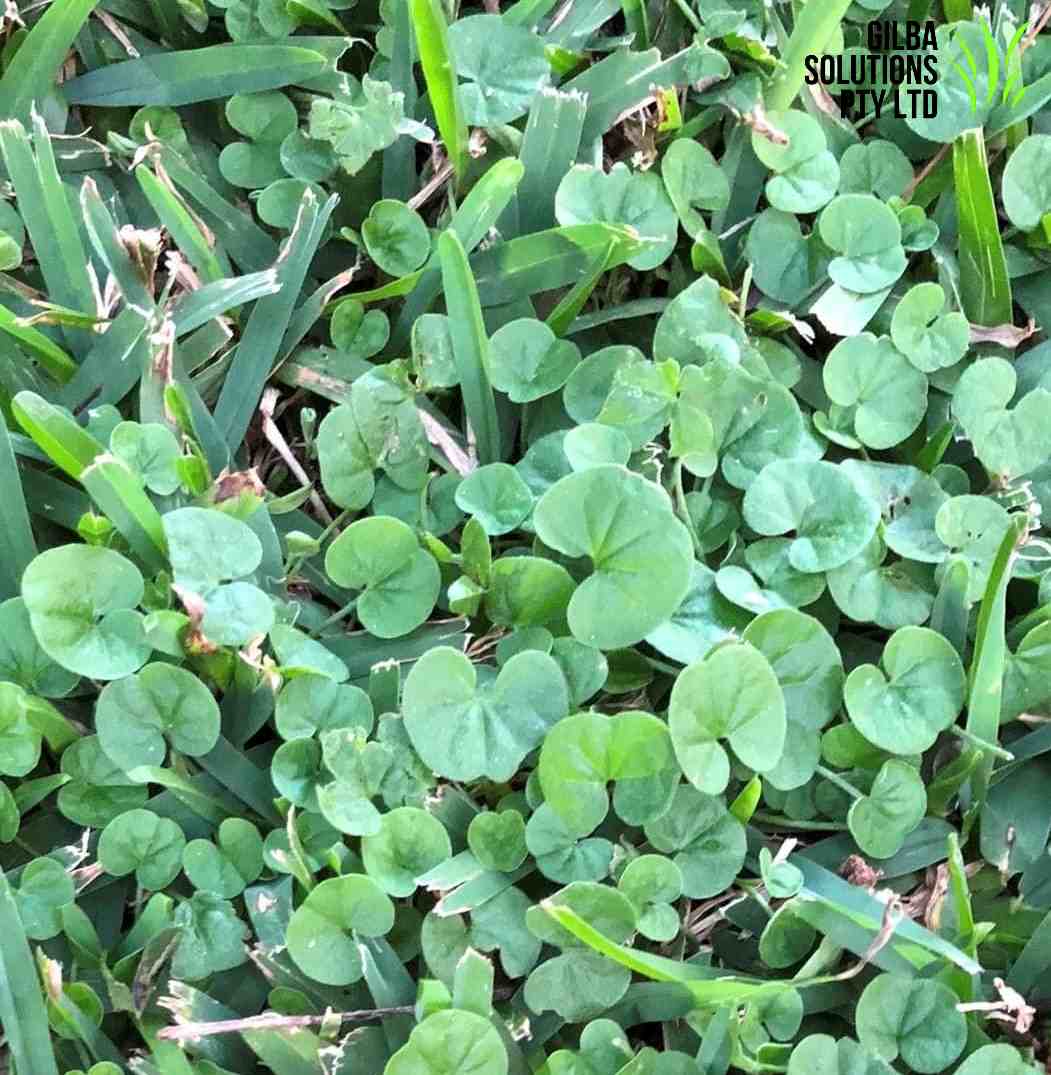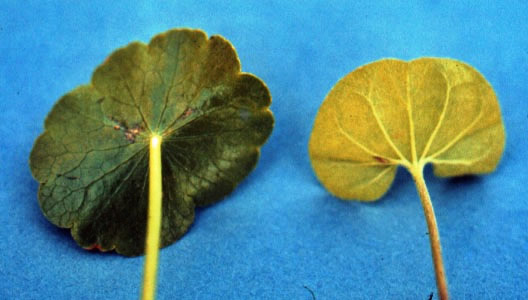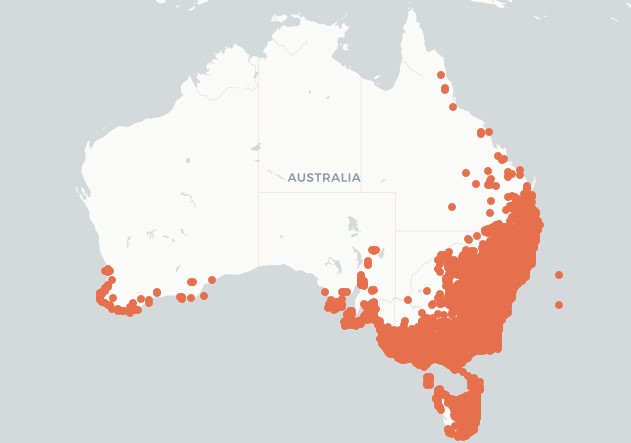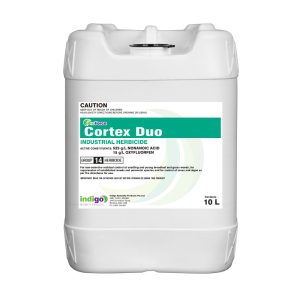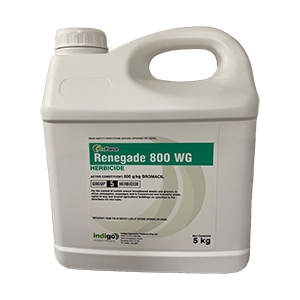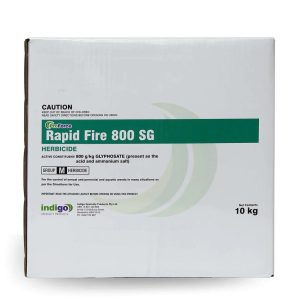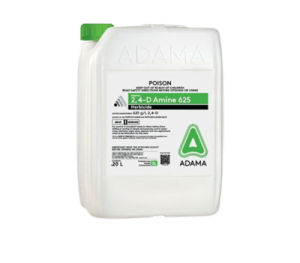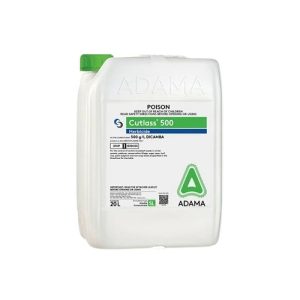Dichondra (Dichondra repens)
Dichondra repens aka Kidney Weed or Asian Pony foot is a creeping perennial broadleaf weed, that is capable of living more than two years. It spreads widely via underground stolons, and forms dense, low-growing mats in turf. The Pony foot name is due to the shape of its leaves.
After you read this, you will be able to:
- Identify Dichondra, Kidney Weed or Asian Pony foot.
- Know the habitat of Dichondra.
- Know the best cultural and chemical options to control Kidney Weed.
Why is Dichondra a Weed?
Although it is often in use as an alternative ground cover, it becomes a problem in turfgrass when it starts to spread aggressively. This is because:
- It is very aggressive, and forms dense mats that choke out the existing vegetation.
- It survives in full sunlight to partial shade.
- Asian Pony foot often outcompetes grass in thin, weak, poorly maintained turf areas.
- The stems root at the leaf nodes and create new plants.
Dichondra is a member of the Morning Glory family, grows well in moist soils and is a good indicator weed for shade.
For more information, please check out our weed ID chart.
The distribution of Dichondra or Kidney Weed in Australia is courtesy of The Atlas of Living Australia.
Dichondra Identification.
Kidney Weed grows well in sunny spaces where moisture is constant, but does not favour areas with harsh Winters. It tolerates unfertile, fine textured soils, but does not grow well in saline or compact soils.
Category: Kidney Weed is a broadleaf (Dicot) weed.
Photosynthetic Pathway: C3 Weed.
Flower: In the Spring, Asian Pony Foot produces clusters of very small white flowers, and these can continue through the Summer months.
Height: Dichondra forms dense mats that are 37 to 75 mm in height.
Leaf Width: Its leaves are less than 12 mm wide.
Leaf shape: Kidney Weed has kidney shaped leaves.
Reproduction: Asian Pony Foot reproduces from seed and vegetatively by creeping stolons.
Comments: Both sides of the leaves have a cover of soft, greyish hairs, and it has smooth leaf margins. It does not tolerate frost. Asian Pony Foot is often confused with Dollarweed.
- Asian Pony Foot has kidney-shaped with smooth edges.
- Dollarweed leaves are completely circular.
- The stem of Kidney Weed is at the edge of the leaf, while the stem of Dollarweed is at the centre of the leaf.
Summary of Differences Between Dichondra and Dollarweed.
Plant | Leaf Shape | Leaves | Stem Placement |
Dichondra (Kidneyweed or Ponyfoot) | Kidney shape | Leaves indent where stem connects | Stem grows from edge of the leaf |
Dollarweed (Pennywort0 | Round | Dull, hairless with a roughly scalloped edge. | Stem grows from centre of the leaf |
Habitat: Asian Pony Foot is a warm-season weed that can’t survive cold northern winters, and does not tolerate drought. It grows in grassland and woodland, and is a lawn weed.
How to Remove Dichondra from your Lawn.
Cultural Control of Dichondra.
- Fertilise properly and keep the soil at the right pH.
- Mow at the correct height of cut for the turf species present, and for the time of year.
- Deal with any compaction by aerating.
- Hand remove this weed if its not too widespread
How to Hand Remove Dichondra.
- With small infestations, gently pull out the plants.
- Make sure that you remove the entire root system.
- A garden fork helps loosen the soil around any deep roots so they are easier to pull out.
- Once you pull the plants out dispose of them so that they cannot regrow or spread seeds.
- The will need to regularly monitor the area as the seeds can remain viable for some time.
Cultural practices such as these promote a dense and vigorous turfgrass cover, and allow it to better compete with weeds.
Chemical Control of Dichondra.
Post Emergent Control of Dichondra.
Repeat applications of herbicides that contain 2,4-D work the best on Asian Pony Foot. Apply these in the Spring, from March to early May, and at temperatures that will not damage turfgrass.
Product labels will have information on safe use temperatures for turf.
- 2,4-D
- Dicamba. Do not use on Buffalo grass.
- Warhead Trio.
Table of Post Emergent Herbicides for Dichondra.
Product | Active | Chemical Group | Rate/Ha | Comments | ||||
2,4-D | 2,4-D | 4 | 1.8-3.2 | Wet foliage thoroughly. DO NOT mow lawn for 1 week before and at least 1 weed after application. DO NOT use on Buffalo grass (WA only). | ||||
Dicamba | Dicamba | 4 | 1.2L + 3.2L of 2,4-D Amine 625g/L | Use a minimum of 1000L/Ha water. Do not spray on Buffalo or Bent Grass. | ||||
Warhead | MCPA + Clopyralid + Diflufenican | 4 + 12 | 5 L | You may see discolouration on kikuyu, carpet grass and Queensland blue. Avoid overlapping. Use an NIS. | ||||
Non Selective Dichondra Herbicides.
You cannot use any of these on lawns or turf areas to selectively remove Kidney Weed.
- Glufosinate-ammonium provides control for 4 to 6 weeks. However this weed will regrow because glufosinate does not move far.
- Glyphosate. You can use Glyphosate but if water quality is an issue then use ProForce Manta Ray.
These are non-selective but also have a long term residual and stop any re-growth of Kidney Weed.
- Renegade. Renegade stops germination for up to 12 months. This reduces the need for multiple herbicide applications.
- Numchuk Quad. This gives post and pre emergent Kidney Weed control for up to 12 months.
- Cortex Duo. Cortex Duo gives a rapid knockdown of Dichondra repens, and residual control for up to 3 months. It is also safe to use around trees.

